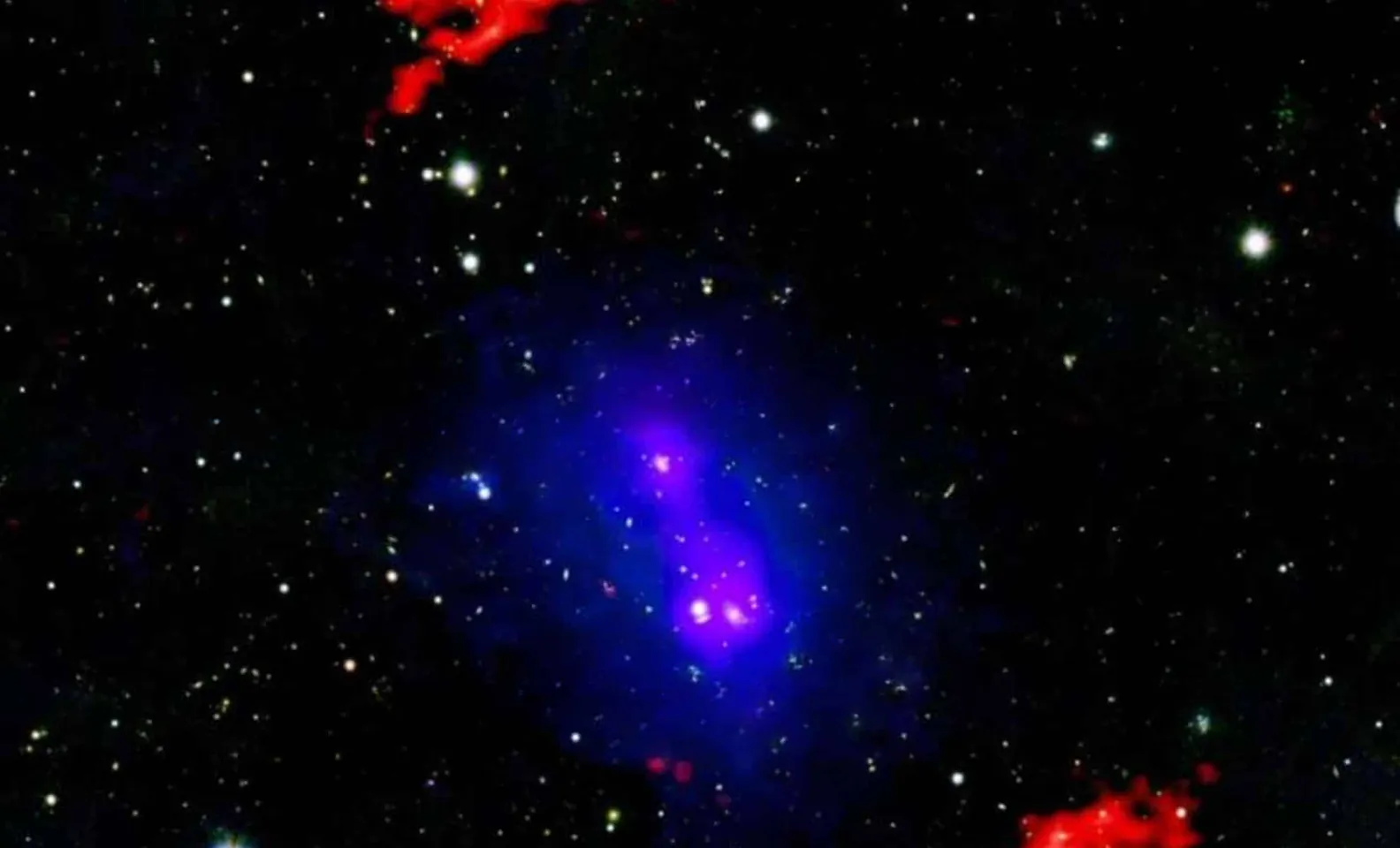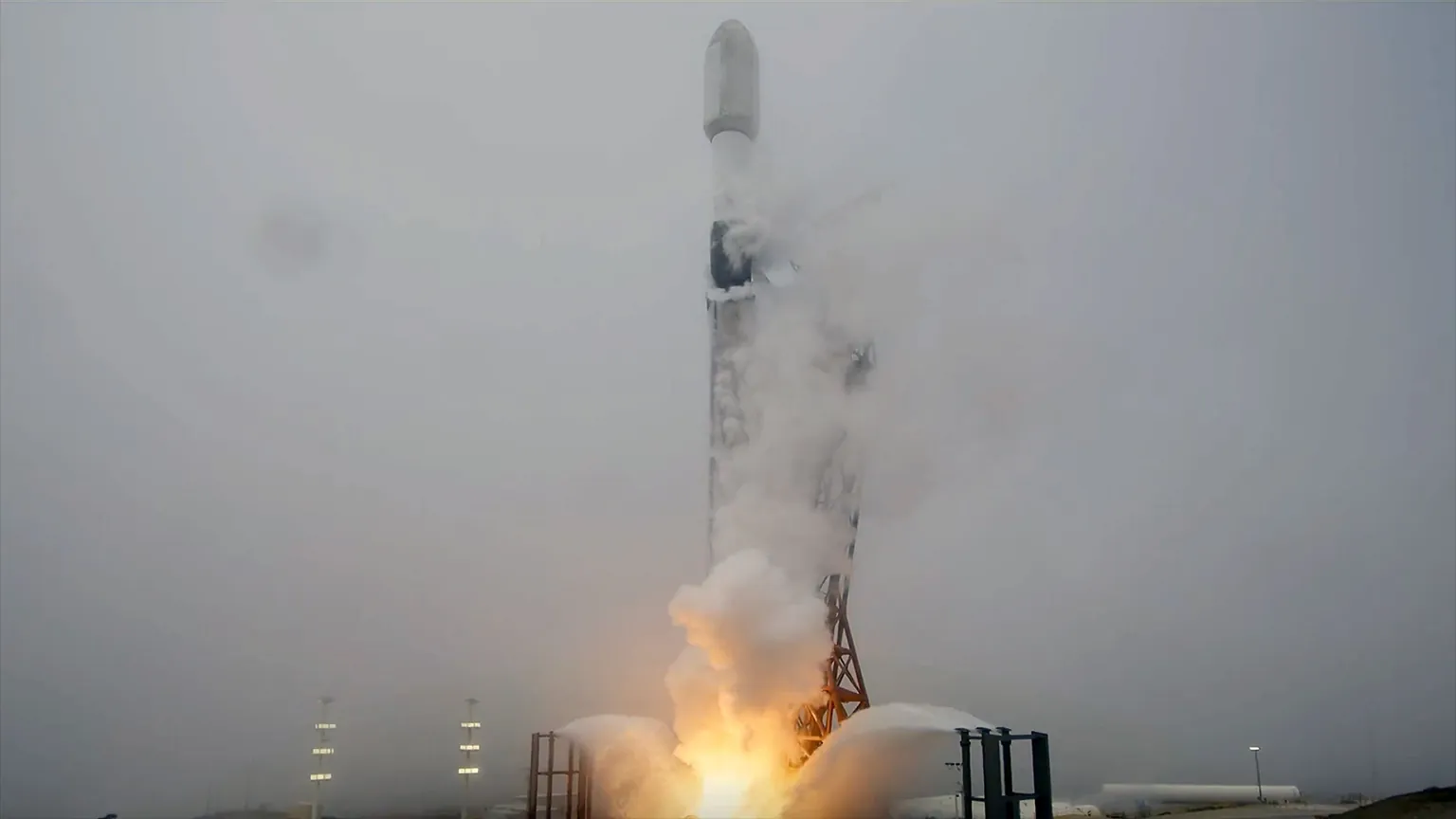A Rare Cosmic Event: Two Galaxy Clusters on a Collision Course Galaxy clusters are among the largest structures in the universe, composed of hundreds or thousands of individual galaxies, massive amounts of hot gas, and an invisible component of dark matter.
After a first collision that occurred approximately one billion years ago, these two galaxy clusters have continued to move outward.
However, recent data from NASA’s Chandra X-ray Observatory and ESA’s XMM-Newton telescope reveals that the two clusters have begun to slow down and are now on course to collide again.
Shock Fronts: Evidence of a Second Collision The collision between galaxy clusters creates shockwaves and disruptions in the hot gas that exists between them.
NASA’s Chandra X-ray Observatory detected X-rays (in purple), while XMM-Newton provided additional X-ray data (in blue).
NASA’s Chandra X-ray Observatory and other cutting-edge telescopes have made a historic discovery: two massive galaxy clusters, PSZ2 G181.06+48.47, are not only headed for collision but have already had a dramatic first impact. Located 2–8 billion light-years from Earth, these galaxy clusters present a unique and priceless chance to investigate the cosmic forces forming the cosmos. Our understanding of dark matter, galaxy formation, and the intricate dynamics of large-scale cosmic interactions is anticipated to be greatly improved by this discovery.
The results, which were first published in The Astrophysical Journal in June 2025, indicate that the two clusters are currently headed for another collision. The study of galaxy cluster dynamics has reached a significant turning point, and it demonstrates how cosmic occurrences like these can help us comprehend the fundamental forces at play in the universe.
Two Galaxy Clusters on a Collision Course: An Uncommon Cosmic Occurrence.
Galaxy clusters, which are made up of hundreds or thousands of individual galaxies, enormous amounts of hot gas, and an unseen component of dark matter, are some of the largest structures in the universe. These enormous systems are held together by gravity, and important information about the nature of the universe can be learned from their interactions. One of the most intriguing discoveries in astrophysics in recent years is the newly made PSZ2 G181.06+48.47 observation. This cluster, which is 2–8 billion light-years from Earth, has been observed while interacting with another galaxy cluster in a unique and intricate way.
These two clusters of galaxies have been continuing their outward migration since their initial collision some one billion years ago. The two clusters have started to slow down, though, and are now headed for another collision, according to new data from ESA’s XMM-Newton telescope and NASA’s Chandra X-ray Observatory. Because of this, astronomers have a rare chance to watch how galaxy clusters change over the course of several phases of a high-energy cosmic event.
Evidence of a Second Collision: Shock Fronts.
The hot gas that exists between galaxy clusters is disrupted and shockwaves are produced when they collide. The energy dynamics of such events are crucially revealed by these shock fronts. Similar to the shockwaves created when jets break the sound barrier, astronomers saw shock fronts in the case of PSZ2 G181.06+48.47. Scientists can better understand the forces at work by observing how these shock fronts, which were produced by the initial collision, continue to expand outward and interact with the surrounding gas.
Scientists found anomalous shock fronts around the cluster’s outer edges using data from several telescopes, including Chandra and the LOw Frequency ARray (LOFAR). While XMM-Newton supplied extra X-ray data (in blue), NASA’s Chandra X-ray Observatory detected X-rays (in purple). These observations were combined with the optical data from Pan-STARRS and the radio data from LOFAR (shown in red) to produce a comprehensive composite image of the collision site.
According to this data, the shock fronts have spread out over an unprecedented 11 million light-years, which is the greatest separation of shock fronts ever seen from a collision between galaxy clusters. The structures continue to spread outward, providing fresh perspectives on the physics of galaxy cluster interactions. It is thought that the structures were formed by gas disruption during the initial collision.







